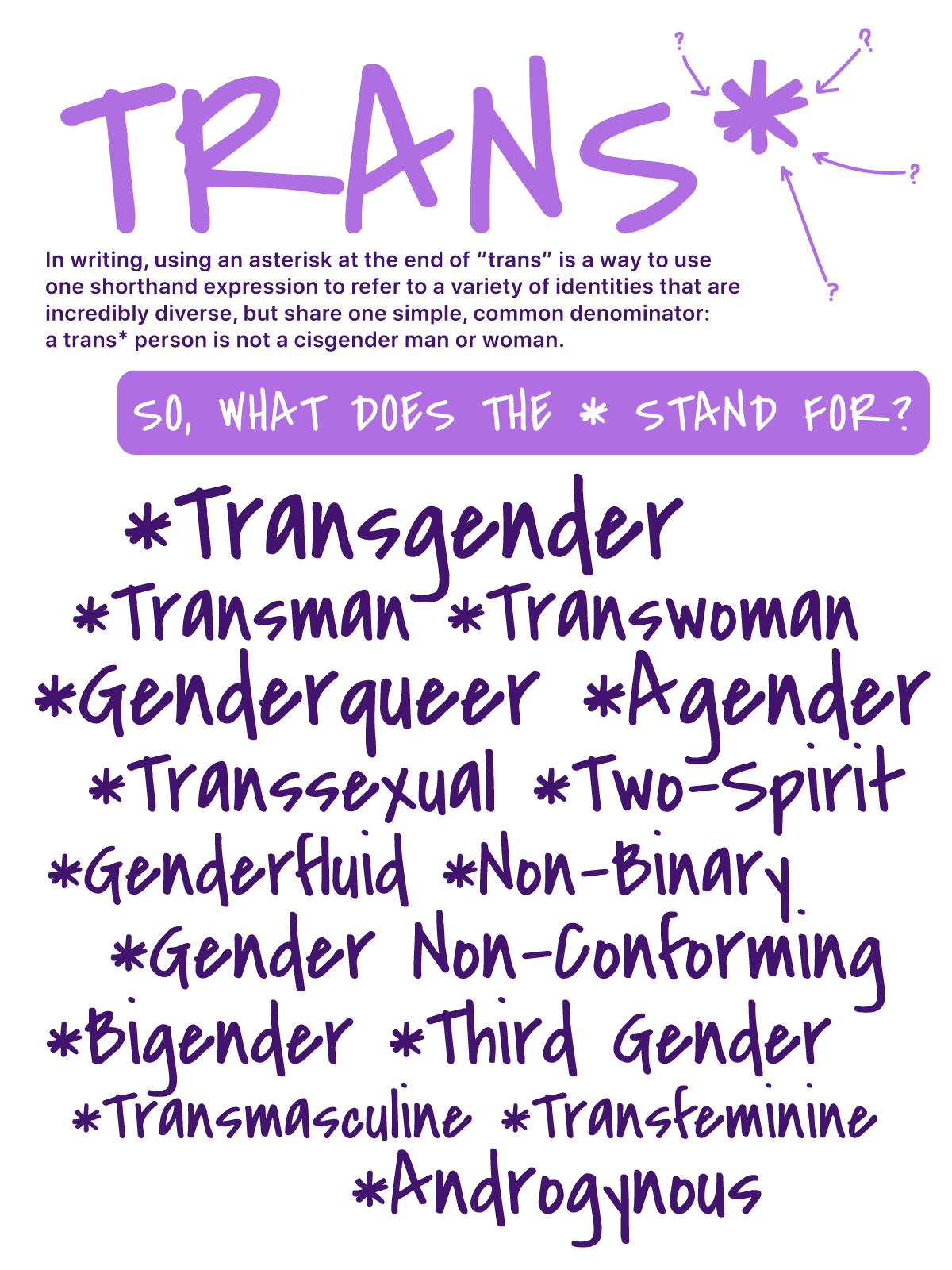A few people have asked why I write “trans*"; (with the asterisk) instead of just “trans”; when referring to trans* folks on my site. Well, I’m happy to answer that!
There are certainly downsides and upsides to the asterisk (similar to the @ in Latin@/Chican@, like “How do you pronounce it?”; (with the asterisk, you don’t pronounce it), and it’s not for everyone, but you can investigate and weigh the pros and cons and decide for yourself.
I created the graphic above to help raise awareness of this so folks can be more inclusive in their writing when referring to trans* people.
About Version 2
I updated this graphic, not just visually, but in content in September 2018. Instead of publishing that as a separate post (like how I’ve done with genderbread people), I am just replacing the image on this one instead. Here’s why: Version 2 is…
- Cuter and easier to implement on a bulletin board or in a classroom (how a ton of people have been using this graphic over the years)
- Edited based on community feedback, including the removal of “transvestite”; (which was confusing and inaccurate to include, because that’s not a trans* identity – my bad)
- Easier to print on standard 8.5×11 or A4 paper, instead of tabloid size
Since publishing the first version, “trans*"; got added to the Oxford English Dictionary, which is a big leap forward in layperson accessibility for this grammatical monkey wrench.
For me, intentionally including non-binary identities when talking about trans* issues, instead of perpetuating the societal mental default of binary trans identities (i.e., transmen and transwomen) is worth the extra effort – that is, assuming you’re not just talking about transgender women and transgender men in a given moment. And the Alphabet Soup 2.0s that are popping up (e.g., TGNCNB for “transgender, gender non-conforming, and non-binary) are creating as many problems as they solve.


